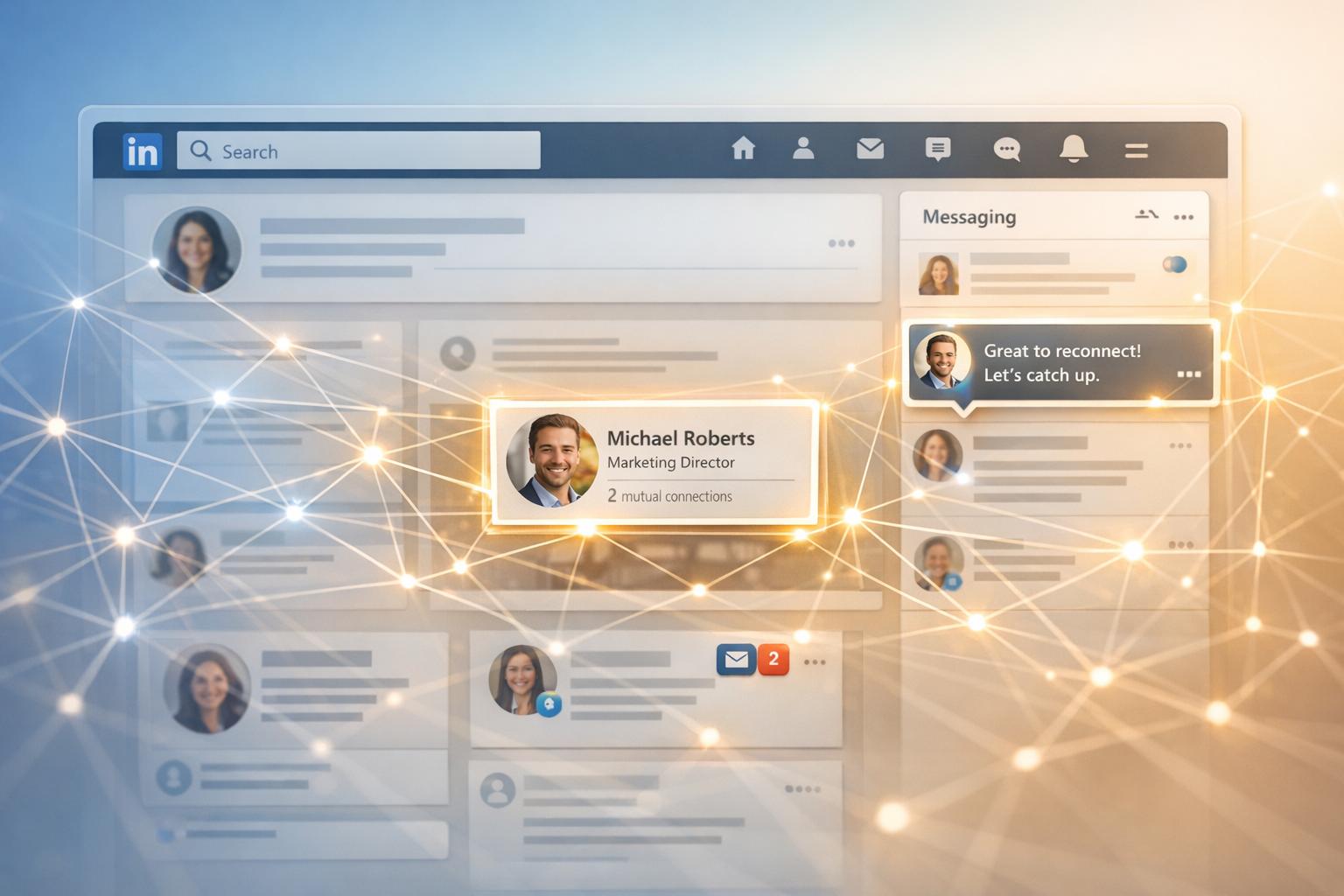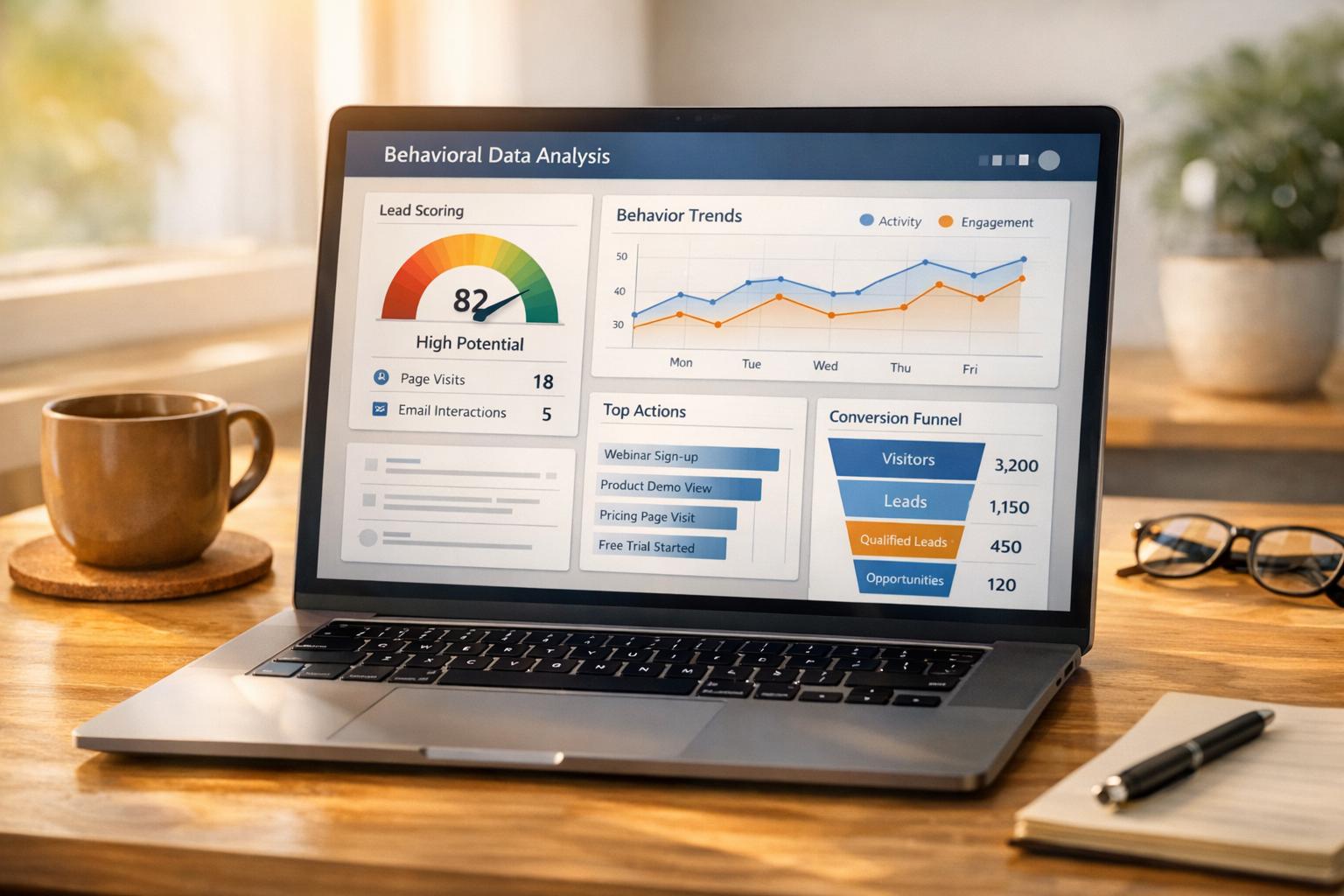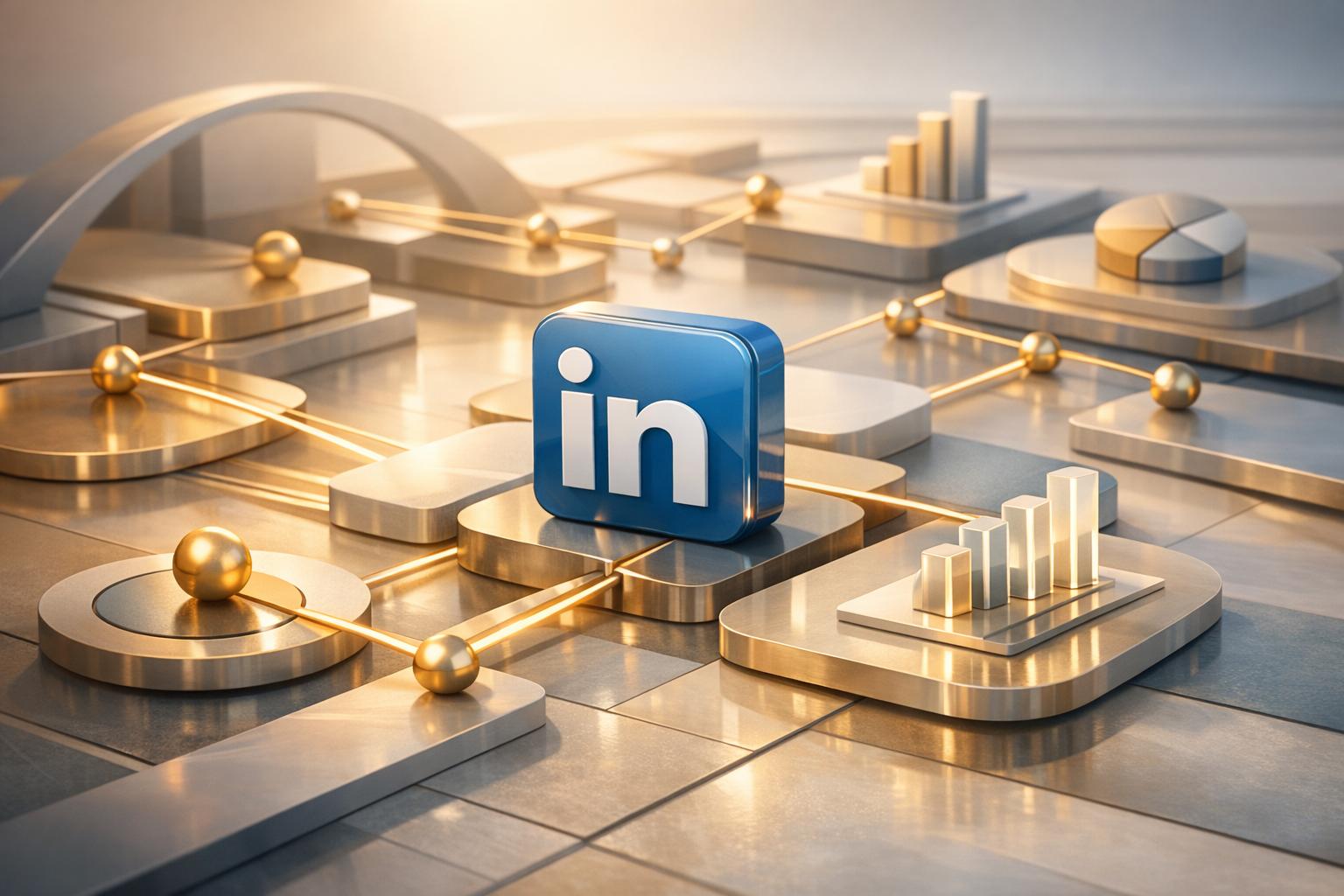
White-label lead generation is reshaping how agencies deliver scalable, high-quality services. Instead of building tools from scratch, agencies rebrand third-party platforms, saving time and resources while focusing on client relationships. This approach addresses growing client demands for automation, analytics, and real-time results.
Key Takeaways:
- What It Is: Agencies rebrand third-party lead gen platforms as their own, bypassing development costs and time.
- Why It Works: Offers cost savings, scalability, and reduced technical risks while maintaining client trust.
- Benefits:
- Automates workflows, reducing manual effort.
- Custom branding strengthens agency identity.
- Enables subscription-based models for steady revenue.
- Essential Features:
- AI-driven messaging for personalized outreach.
- Centralized inbox for managing multiple campaigns.
- CRM integration for streamlined lead management.
Agencies leveraging white-label platforms like SalesMind AI can scale operations, offer tailored services, and build long-term client relationships. This model is a game-changer for agencies seeking efficiency and growth.
Benefits of White-Label Lead Generation for Agencies
Scalability and Operational Efficiency
White-label lead generation platforms make it easier for agencies to grow without hitting common roadblocks. Traditional methods, like manual prospecting and outreach, often tie revenue growth directly to increased staffing and resources. This one-to-one relationship between growth and costs can make scaling both slow and expensive.
With automated workflows, tasks like researching prospects, setting up email sequences, and scheduling follow-ups become streamlined. Instead of needing an entire team for multiple campaigns, a single person can now manage them efficiently. These tools go beyond basic automation, offering features like lead scoring and pipeline management, which further reduce manual workload.
The advantages are even more pronounced when handling campaigns across different industries. Automated analytics take care of performance tracking and ROI reporting, allowing agencies to deliver detailed results to clients without extra effort.
On top of improving efficiency, white-label tools allow agencies to fully rebrand their services, giving them a professional edge.
Custom Branding and Client Control
White-label solutions give agencies the ability to present lead generation services as entirely their own. From the first outreach email to the final performance report, every touchpoint reflects the agency’s branding. The underlying technology provider remains invisible, making the agency appear as the sole expert behind the service.
Features like custom domain integration let agencies use their own email addresses and web domains throughout the process. They can also customize client-facing dashboards with their logos, color schemes, and design elements, ensuring a cohesive and professional look.
Another standout feature is the ability to white-label reporting. Agencies can present detailed analytics and performance metrics as their proprietary insights, positioning themselves as tech-savvy leaders rather than users of third-party tools. This not only boosts their credibility but also supports premium pricing and strengthens client loyalty.
Additionally, customized client portals provide a branded space where clients can access their lead data, campaign results, and other key metrics. These portals can even be tailored to use industry-specific terms and preferred metrics, offering a personalized experience that highlights the agency's attention to detail.
These branding capabilities also pave the way for steady, recurring income streams.
Recurring Revenue Opportunities
White-label lead generation platforms allow agencies to move away from one-off projects and adopt subscription-based revenue models. Instead of charging for individual campaigns or monthly retainers, agencies can offer comprehensive lead generation services as part of a subscription package. These packages typically include platform access, campaign management, and ongoing performance optimization.
Tiered pricing structures make it easy to upsell advanced services. For example, a basic plan might cover standard email outreach and simple reporting, while premium options could include advanced automation, multi-channel campaigns, and in-depth analytics. This flexibility lets agencies cater to clients with varying budgets while maximizing revenue from those willing to invest more.
Subscription models also bring financial stability. Predictable monthly income improves cash flow and helps with planning future investments, whether it’s hiring new staff or expanding service offerings.
Perhaps most importantly, subscription-based services encourage long-term client relationships. When clients pay monthly for ongoing lead generation, they’re less likely to switch providers. This creates a snowball effect, as agencies build a growing base of recurring clients over time, leading to sustainable growth.
Launch Your White-Label AI Lead Generation Agency in 2025 | Done-For-You Enterprise System
Core Features of White-Label Lead Gen Platforms
Choosing the right white-label lead generation platform can be a game-changer for agencies aiming to scale efficiently. With so many options available, certain features stand out as essential for delivering consistent results while keeping the agency's branding intact. Understanding these capabilities is key to selecting a platform that supports growth and meets client expectations.
Automation and AI-Driven Messaging
Automation, powered by AI, is at the heart of modern lead generation. These platforms leverage AI to analyze prospect data and create personalized outreach at scale.
For instance, AI can evaluate recent news, shared connections, and industry trends to craft messages that feel relevant and timely, leading to better response rates. Multi-sequence automation takes this further by enabling agencies to build nurturing campaigns that adapt based on a prospect's behavior. Let’s say a prospect views a LinkedIn profile but doesn’t respond to an initial message - the system can automatically send a follow-up that focuses on building rapport rather than pushing a direct pitch.
Another valuable feature is action-based triggers. These triggers adjust messaging based on specific prospect actions, like engaging with content, visiting a website, or updating their job status. By timing outreach to align with moments of heightened interest, agencies can significantly improve engagement.
Unified Inbox and Lead Management
As agencies grow, managing multiple LinkedIn accounts and client campaigns can quickly become overwhelming. A centralized communication hub simplifies this by consolidating all interactions in one place.
With a unified inbox, team members can easily manage responses across multiple client accounts without losing track of conversations. Features like detailed conversation histories and team collaboration tools ensure smooth transitions between team members and keep campaigns running seamlessly.
Real-time lead tracking is another game-changer. Agencies can monitor campaign performance metrics - such as connection acceptance rates, response rates, and conversions - all from a single dashboard. This visibility makes it easier to pinpoint what’s working and tailor strategies for different client segments.
Smart filtering and categorization tools also help agencies focus on high-value prospects. By setting filters based on criteria like job titles, company size, or engagement levels, teams can prioritize leads that are most likely to convert, streamlining their efforts and boosting efficiency.
Analytics and CRM Integration
In-depth analytics transform raw campaign data into actionable insights. The best platforms go beyond basic metrics like open and response rates, offering a deeper look into overall campaign performance and pipeline health.
For example, advanced analytics can uncover trends that help refine outreach strategies over time, ensuring better results with each iteration.
Seamless CRM integration is another must-have. By syncing prospect data, conversation histories, and engagement metrics with popular CRM systems, agencies can avoid duplicate data entry and maintain a complete view of each lead's journey. This integration ensures that lead generation efforts align perfectly with the broader sales process.
Lead scoring algorithms are particularly useful for prioritizing prospects. These algorithms evaluate factors like profile completeness, recent activity, and engagement patterns, helping teams focus on leads with the highest potential for conversion.
Custom reporting tools also allow agencies to tailor how they present results to clients. Whether clients prefer detailed spreadsheets or high-level visual summaries, these platforms make it easy to deliver reports that meet their needs. Plus, integrations with tools like email, scheduling, and project management software ensure that lead generation activities fit seamlessly into the agency’s overall workflow, maximizing the impact of every lead generated.
sbb-itb-817c6a5
How to Integrate White-Label Solutions into Agency Business Models
Integrating white-label lead generation tools into an agency’s operations goes beyond simply subscribing to a platform. It’s about embedding these tools seamlessly into your workflow while maintaining your brand identity and generating additional revenue. To succeed, focus on thoughtful customization, smart service bundling, and transparent pricing that benefits both your agency and your clients. Start by ensuring that every client-facing element reflects your brand’s unique identity.
Customizing Tools for Your Agency's Brand
The beauty of white-label solutions is their flexibility - they can be tailored to feel like they were designed specifically for your agency. Customization isn’t just about slapping on a logo; it’s about creating a cohesive and proprietary experience for your clients.
Start with the basics: customize visual elements like color schemes, fonts, and logos to align with your branding guidelines. Most white-label platforms let you personalize client-facing dashboards, reports, and email templates. This ensures a polished and consistent look across all your client interactions.
Setting up a custom domain for client access is another crucial step. A branded domain not only enhances trust but also reinforces your agency’s professionalism.
Take it a step further by designing branded onboarding materials. Whether it’s welcome guides or training resources, every client touchpoint should reflect your agency’s identity. Additionally, create custom report templates that combine platform data with your agency’s insights. This transforms generic metrics into strategic documents that showcase your expertise and value.
Bundling Lead Gen with Existing Services
Bundling lead generation with your current offerings is a smart way to increase value and improve profit margins. Service bundling not only opens up upselling opportunities but also strengthens your relationship with clients.
For instance, you could combine lead generation with content creation. While the white-label platform automates outreach, your team can focus on crafting personalized content, social media posts, or follow-up campaigns. This positions your agency as a strategic partner that pairs advanced tools with human creativity.
For B2B clients, sales enablement bundles can be especially effective. Pair lead generation with services like CRM setup, sales training, and ongoing support. This ensures that the leads you generate are effectively nurtured into tangible opportunities.
Marketing agencies can also integrate lead generation into digital marketing packages. For example, combining LinkedIn outreach with email marketing campaigns creates a multi-channel approach that guides prospects through the entire sales funnel, increasing overall campaign success.
Another option is performance-based bundling, where service pricing is linked to results. For example, you could tie lead generation success to paid advertising performance or audience targeting improvements. This approach ensures all elements of your service package work together, creating a cohesive and results-driven offering.
Pricing and Contract Structures
A well-thought-out pricing strategy is essential for balancing platform costs, resource allocation, and profit margins. Tiered pricing models are a popular choice, offering clients flexibility while maximizing your revenue potential.
Many agencies adopt a base fee plus performance model. The base fee covers platform costs and standard management, while performance incentives are tied to specific outcomes like qualified leads, scheduled meetings, or closed deals.
Charging an initial setup fee can help offset the time and effort required for customization and campaign planning. This ensures you’re compensated for the upfront work involved in launching a successful campaign.
For clients with larger needs, offering volume discounts can encourage them to scale their engagement. Pricing should reflect the scope of usage while incentivizing clients to invest in broader outreach.
When structuring contracts, aim for agreements that foster long-term partnerships. Include clear commitment periods, performance benchmarks, and review milestones to ensure transparency and continuous improvement. At the same time, include termination clauses to protect both parties.
Finally, establish clear payment terms to maintain smooth cash flow. Standard options like Net 15 or Net 30 terms work well, and you can incentivize annual prepayments to streamline billing. Automating your payment system can further reduce administrative overhead and improve efficiency.
Case Study: Scaling Lead Generation with SalesMind AI

This case study explores how agencies leverage SalesMind AI to expand their lead generation efforts and increase revenue. The platform showcases how white-label solutions can be applied effectively, delivering measurable results for agencies of various sizes and industries.
Core Features of SalesMind AI
SalesMind AI integrates LinkedIn automation with AI-powered messaging, offering a rebrandable solution for lead generation. Its unified inbox consolidates LinkedIn interactions, making it easier for agency teams to oversee multiple client campaigns from a single dashboard.
One standout feature is the platform's AI-driven messaging, which generates automated, personalized reply suggestions. This streamlines workflows for agency staff while maintaining the human touch that’s critical for driving conversions.
Another key feature is refined lead scoring, which utilizes MBTI personality insights. By incorporating psychological profiling, agencies can target prospects more effectively, crafting outreach efforts that resonate with specific personality types and significantly improve response rates.
SalesMind AI also excels in integration capabilities, offering native connections to major CRMs like Salesforce, HubSpot, and Pipedrive. Additionally, API access and Zapier integrations ensure seamless data flow between systems, eliminating manual data entry and reducing the risk of losing valuable lead information.
The platform's MirrorProfiles integration allows agencies to rebrand prospecting campaigns, presenting them as proprietary solutions under their own branding. This positions agencies as comprehensive providers rather than simple service resellers, which is a game-changer for client perception and trust.
Scalability and Revenue Growth
SalesMind AI is designed to support agencies of all sizes, from small teams managing a few clients to large enterprises running hundreds of campaigns at once. Its scalability is evident in its flexible pricing and customization options.
For agencies aiming to align the platform with their brand, full UI customization and domain mapping are available. These features require API-level adjustments, with setup fees ranging from $2,000 to $5,000. While this represents an upfront investment, it allows agencies to deliver a fully branded experience that feels like a proprietary tool to their clients.
White-label features are included in higher-tier plans, with enterprise pricing tailored to specific agency needs. This flexibility enables smaller agencies to start with basic white-labeling and scale their investment as their client base grows.
To support agencies during this growth process, SalesMind AI provides dedicated support services, including 1:1 onboarding, white-glove setup assistance, and personalized campaign optimization guidance for higher-tier plans. This hands-on approach helps agencies sidestep common challenges and achieve quicker results.
The platform’s white-label and scalability features align perfectly with strategies for recurring revenue growth, making it an essential tool for agencies looking to expand their services.
Client Success and ROI
The platform’s scalable design directly impacts client performance and return on investment (ROI). Agencies using SalesMind AI report strong results, with the platform earning an overall rating of 8.4/10. Its white-labeling capabilities are rated at 7.5/10, while white-label services score an 8/10.
"What ultimately made me choose SalesMind was the service. Before the subscription, I had a demo plus some days to get used to the tool, always receiving tips from their team. Later, as a client, I got even better service; they helped me with everything I needed to use SalesMind in the best possible way." - Camilo Cardoso, CEO, Monomo [1][2]
This testimonial highlights the exceptional support that agencies receive, from onboarding to ongoing optimization. By offering this level of service, SalesMind AI ensures agencies can maximize their investment and consistently deliver results to their clients.
The ROI for agencies comes from several sources. Automation reduces the time spent on manual outreach, enabling teams to handle more clients without increasing resources. Additionally, AI-driven personalization improves response rates compared to generic outreach, enhancing client satisfaction and retention.
Agencies also benefit from official branding assets and style guides, which simplify the customization process. This minimizes the time and cost of creating branded materials, further boosting efficiency.
Conclusion: White-Label Lead Gen for Agency Growth
Key Takeaways for Agencies
White-label lead generation offers a powerful way for agencies to scale their operations and boost revenue. By partnering with white-label providers, agencies can expand their service offerings, attract a broader range of clients, and better address the diverse needs of their current customers [4].
This model allows agencies to concentrate on their core strengths while outsourcing specialized tasks to experts [4]. It eliminates the need to invest heavily in building in-house capabilities, helping reduce costs and speed up time-to-market.
With access to skilled teams and proven technology, agencies can deliver high-quality services without the trial-and-error of developing proprietary tools [3][5]. Instead, they can rely on established platforms that have already demonstrated their effectiveness in the industry.
As mentioned earlier, automation and AI-driven outreach streamline operations by reducing overhead while improving engagement. These scalable solutions allow agencies to handle more clients without a proportional increase in costs. Rebranding these tools as proprietary services also positions agencies as full-service providers, enhancing their market appeal.
These strategies set the stage for agencies to seamlessly scale their lead generation efforts.
Getting Started with SalesMind AI
For agencies ready to take the next step, SalesMind AI's white-label platform provides a solid foundation. With LinkedIn automation and AI-powered messaging, the platform is designed to support scalable and efficient lead generation campaigns.
Agencies can choose a plan that aligns with their current scale - basic packages work well for smaller clients, while enterprise options include features like UI customization and domain mapping for full branding.
However, success with white-label lead generation goes beyond just adopting the right technology. Agencies need to craft pricing strategies that balance competitiveness with the value they deliver. Positioning these services as part of an integrated solution, rather than standalone tools, allows agencies to command premium pricing while emphasizing the comprehensive nature of their offering.
The white-label economy continues to grow, and agencies that adopt these solutions early will gain a competitive edge that becomes harder for others to match. With platforms like SalesMind AI providing the technological backbone, agencies can focus on their strengths: building strong client relationships and delivering measurable results.
FAQs
What makes white-label lead generation different from traditional methods, and how does it benefit agencies?
White-label lead generation offers a modern twist on traditional methods by letting agencies outsource the process to specialized providers. These providers supply leads that are branded under the agency's name, giving the agency the ability to present professional, ready-to-go solutions without having to create everything from scratch.
This approach comes with some major advantages: saving money, saving time, and growing with ease. Agencies can rely on experts to handle the technical and operational side of lead generation, leaving them free to concentrate on what they do best - like building strategies and nurturing client relationships. It also opens the door to expanding services and growing the business without stretching internal resources thin.
What features should agencies prioritize when choosing a white-label lead generation platform to support their growth?
When choosing a white-label lead generation platform, focus on features that support your agency's growth and operational goals. One of the most important aspects is customization - make sure the platform allows you to fully rebrand it with your logo, colors, and domain. This creates a seamless and professional experience for your clients.
Another crucial consideration is scalability. The platform should be able to handle increasing amounts of data and user activity without sacrificing performance. This ensures your agency can grow without hitting technical roadblocks.
You’ll also want to check for integration capabilities. The platform should work smoothly with the tools you already use, like CRMs or email marketing software, to maintain efficient workflows and consistent data. On top of that, strong reporting and analytics features are a must. These tools help you track metrics like lead performance, conversion rates, and ROI, giving you the insights needed to make smarter, data-driven decisions.
For even more impact, consider platforms with advanced features like lead scoring and customizable campaign options. These extras can help you deliver better results for your clients and position your agency for long-term success.
How can agencies use white-label lead generation tools to enhance their services and boost revenue?
Agencies can make the most of white-label lead generation tools by focusing on how well they fit into their current systems, how much they can be tailored, and how they can grow with the business. Start by ensuring these tools integrate effortlessly with your existing platforms, like CRMs and marketing software. This helps streamline your processes and keeps everything running smoothly without unnecessary hiccups.
Make sure to fully personalize the tools with your agency’s branding - logos, colors, and even custom domains. This not only maintains a polished, professional appearance but also strengthens your agency's identity in the eyes of your clients.
Clear, branded reporting is another must-have. It allows you to present measurable results in a way that highlights your agency's value. And as your business grows, it's important to choose tools that can keep up with increased demand without losing efficiency. With these strategies in place, agencies can boost client satisfaction and set the stage for sustainable revenue growth.


.avif)


